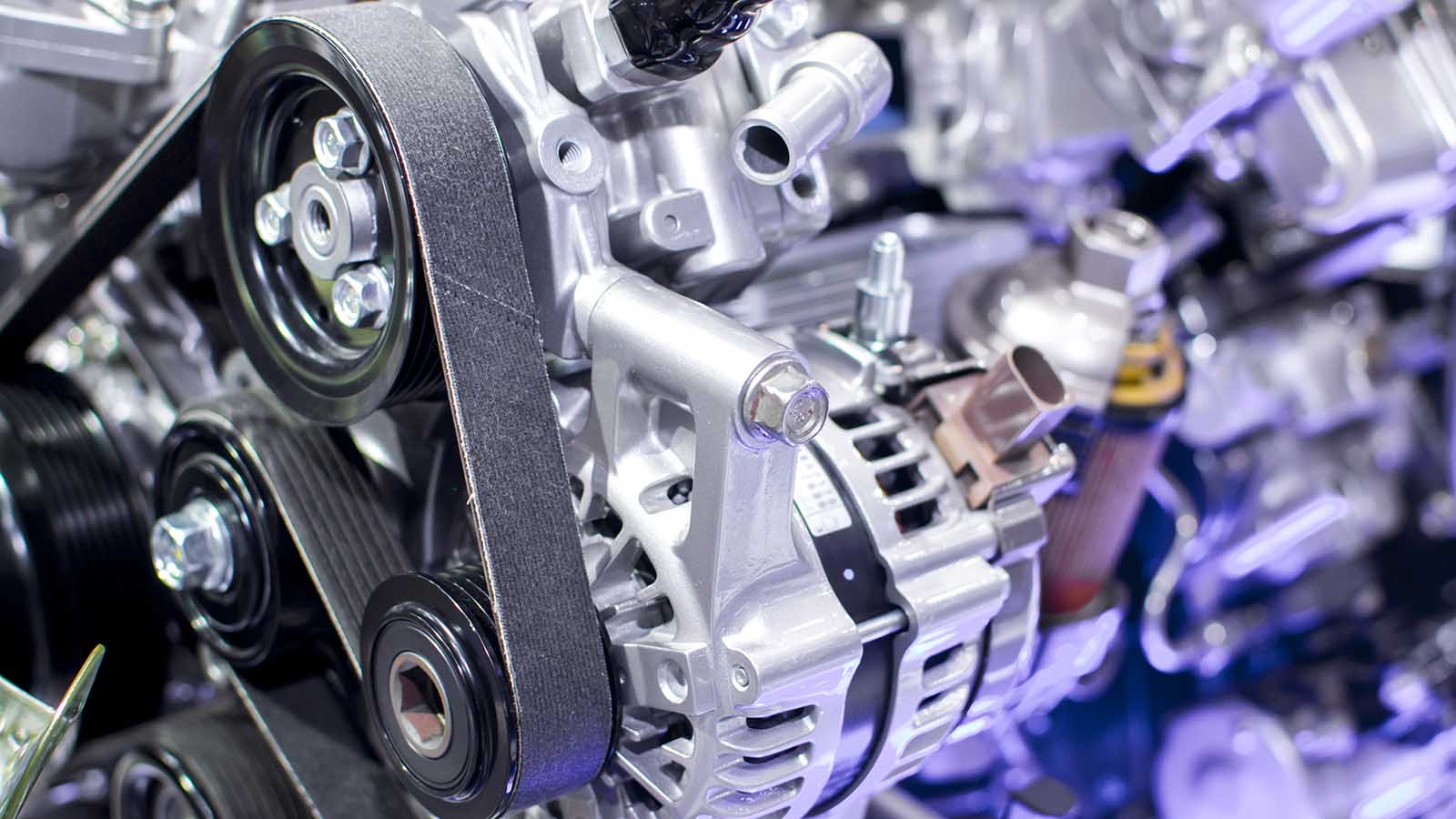WHEN TO REPLACE AN ALTERNATOR BELT

V-belts typically last up to 4 years or 40,000 miles, however, new serpentine belts can last much longer and are generally easier to maintain. The average serpentine belt can last for anything between 60,000 to 100,000 miles. Belts made from ethylene propylene diene monomer (EPDM) are more durable than standard ones and can be used for around 10 years before they need to be replaced.
However, several problems can emerge as the alternator belt ages. For example, it can start to fray, wear, crack, or peel, as well as become loose or misaligned. Replacing the belt in good time is the best way to prevent the system from shutting down while the car is on the road and severe damage to the driven components and car battery.
CAUSES OF ALTERNATOR BELT PROBLEMS
- Aging. This is the most common reason for replacing the belt as the belt will stretch and wear over time. If left for too long, cracks may appear.
damaged tensioner. The tensioner is what keeps the belt tight to stop it from slipping. It should be checked for signs of cracking or contact between the tensioner arm and spring case.
Fluid leaks. Belts can be affected by technical fluids such as coolant, oil, and power steering fluid. These are petroleum based and can therefore damage the rubber surface of the component.
Pulley misalignment. If a drive pulley is misaligned this can put strain on the belt, causing it to fray or slip off completely.
Faulty/damaged bearings. Bearing damage can also cause slipping and overheating due to excessive friction.
SYMPTOMS OF A LOOSE ALTERNATOR BELT
Here is a list of the most common symptoms to help you identify when your belt needs to be replaced due to a loss of contact or tightness.
- The battery warning light comes on. This should be one of the first major warning signs, although it is important to investigate all possible causes.
- The car lights start to flicker or appear dimmer than usual. This could be a sign of both battery and alternator issues. The flickering may persist for a while before the lights eventually stop working due to a lack of power.
- There is a loud chirping or squealing sound coming from the engine compartment. These noises are caused by increased friction with the pulley components.
- The vehicle stalls frequently. If the belt is too loose or slips this could force the engine to stall or shut down. This could be very dangerous if the car is on a busy road or motorway.
- The car battery is dead. If the issue is severe, the battery will not be able to maintain its charge and could die shortly after the car has been started.

 Loading..
Loading..